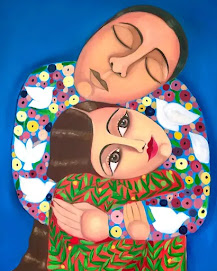Palestine culture and traditions:
Language-
The five million Palestinians mostly follow the religion of Islam which follows the 5 pillars of Islam, attend weekly Friday prayers and celebrate Eid. Although the vast majority are Muslim there are roughly 2.5% are Christian, but other religions such as Judaism are also present. 98.7% of the country’s population mostly consists of Arabs, the most popular language that are spoken in this country is Arabic, however most speak a certain dialect known as Levantine or Shami. Despite how Palestine is portrayed in the western media, Palestinians hold standards of maintaining familial bonds. Whether it be distant or not, as solidarity provides a primary source of identity.
Palestine holds poetry and music dear to them as it helps them stay connected to their past. For example, Mawtini a poem created by Ibrahim Tuqan, later became would be known as the Palestinian National anthem. Some of the national foods include Maqloubah and kunafeh and many more. As the country is in the Mediterranean coast, which impacts on the Palestinian cuisine.
Malak Started painting at the age of 13. In 2014, the Israeli military assaulted Gaza for 51 days, which caused Malak to stay at home for her safety. Feeling trapped in her own house and feeling the need to release her built up emotions.
Unable to leave Gaza, Malak continued to paint about her hardship. Not only did she create over 300 paintings currently, but she also shared her work by using social media such as Instagram and Facebook. By the time she reached the age 14 she started sell her work.
Also, the trauma she faced she not only was able to become financially stable but also excelled academically with the second-highest GPA.
Shifa
We have in this earth what makes life within living
“The women in my artwork has more freedom than me” Pointing out that while living in Gaza, Her own travel was restricted by the Israeli force as she holds her Palestinian nationality. She also mentions that her first piece of artwork was much darker both in content and colour, she quickly decided to change her art style to something that others can look at for some time.
Al Nakba
During the 1948 war, over 700,000 Palestinian people were uprooted from their homes. Creating a refugee crisis, that till this day has not been solved. This huge crisis was known as Al Nakba the Arabic meaning of “catastrophe”. During and after the war many Palestinian villages and properties were destroyed or taken by the Israeli forces. Despite what has happened during the war both states (Arab state and the Israel state) remember the event differently. The Arab state being remembered as a catastrophe while the Israel state remembered these events to be a war of independence as the Palestinian people were forced out but rather fled on their own free will.
In 1947, the UN proposed a plan to partition Palestine into 2 state, independent Jewish state and an Independent Arab state. Over 130 United Nation member recognise Palestine as an Independent state, whereas the rest of the countries including Israel and USA does not make this distinction as a result causing a civil conflict.







No comments:
Post a Comment